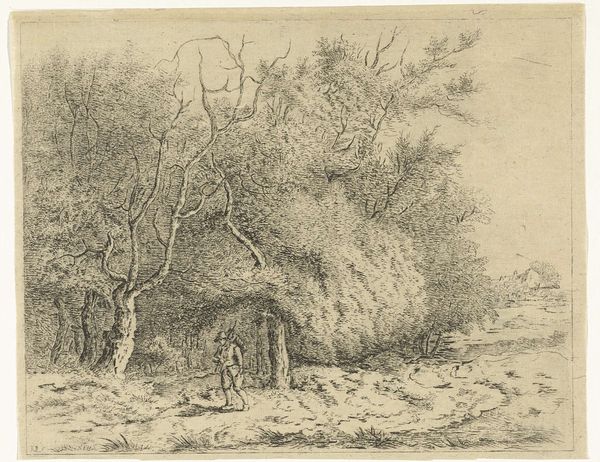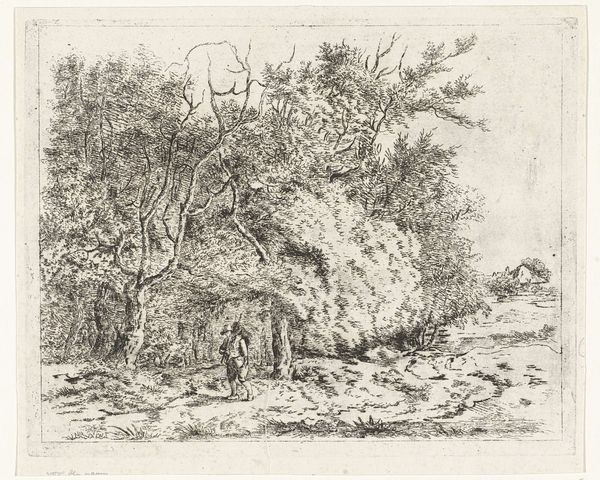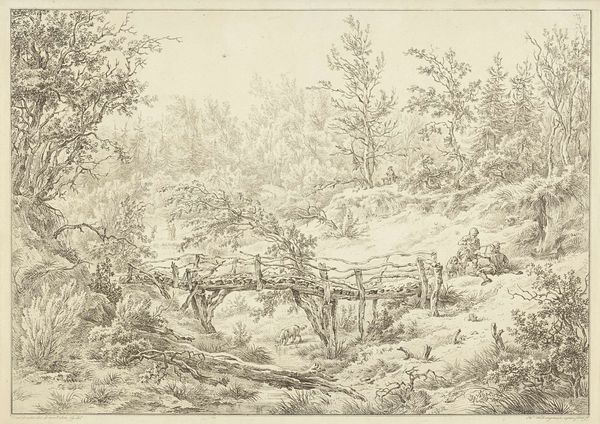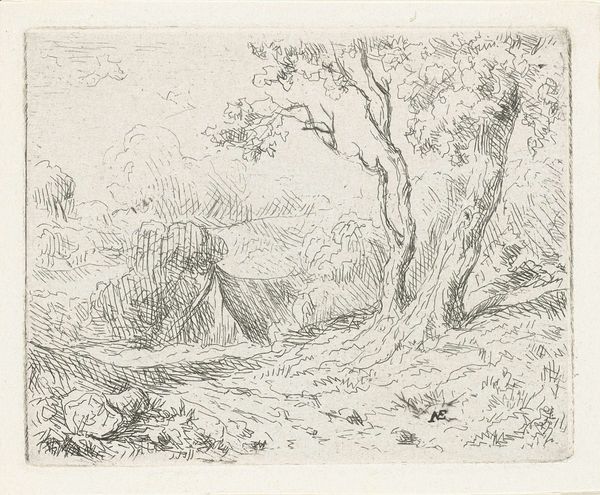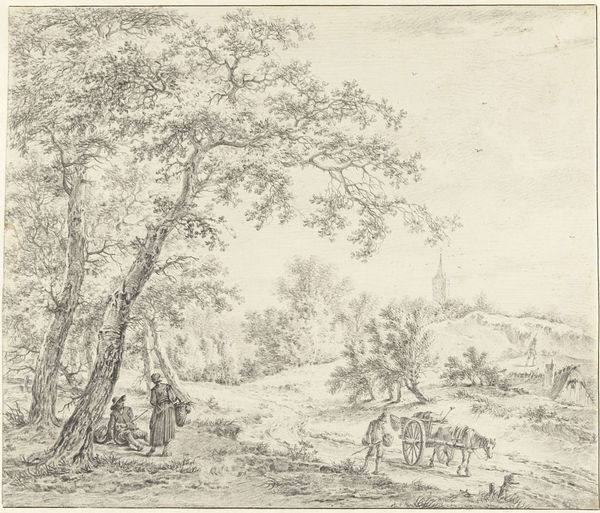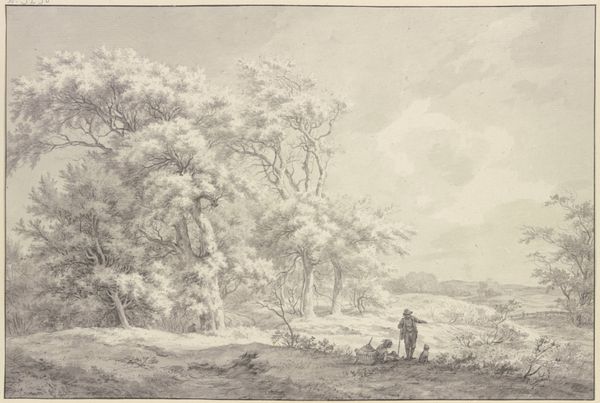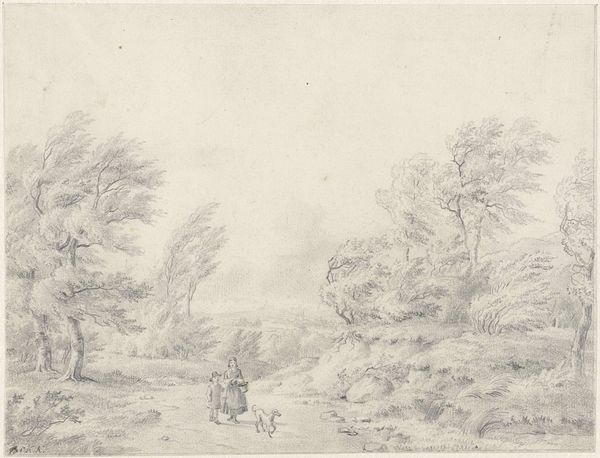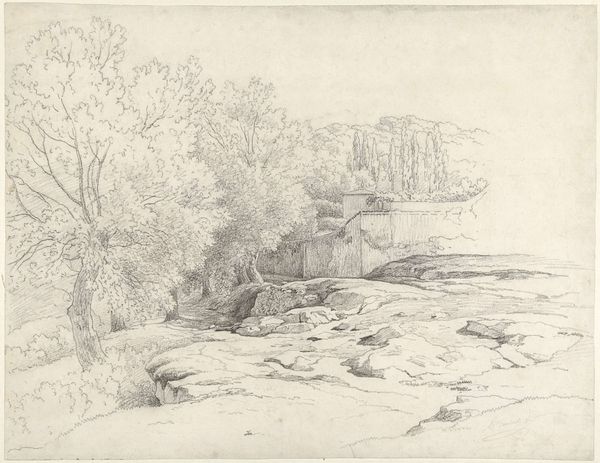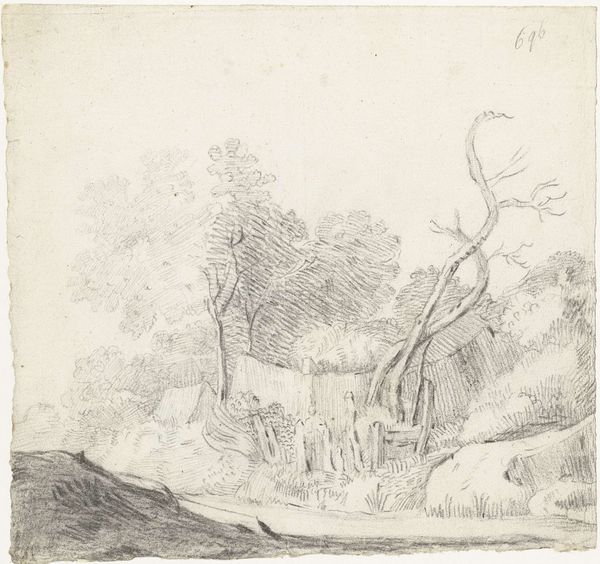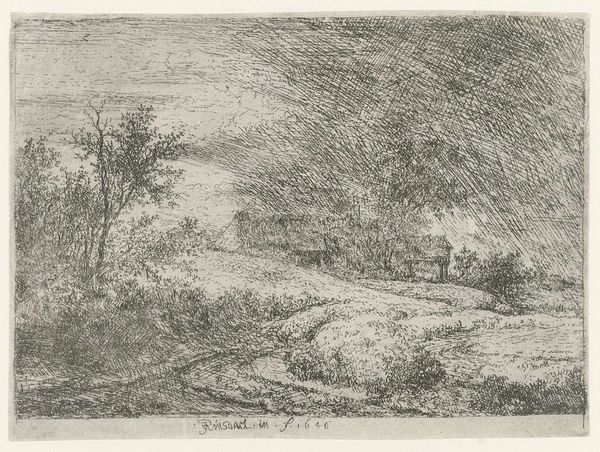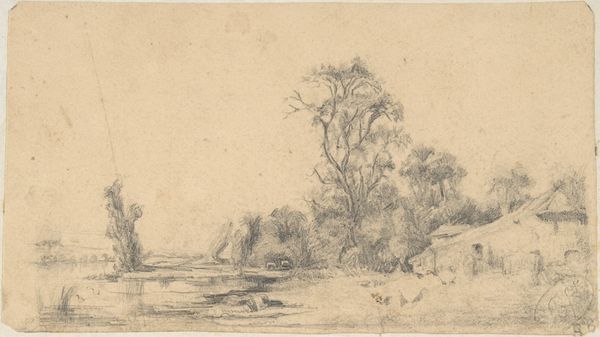
drawing, paper, ink, pencil
#
drawing
#
landscape
#
paper
#
ink
#
pencil
#
genre-painting
Dimensions: height 216 mm, width 300 mm
Copyright: Rijks Museum: Open Domain
Curator: Before us, we have "De Zanderij van de Heer Hoopen," or "The Sand Pit of Mr. Hoopen," attributed to Pieter Pietersz. Barbiers and created sometime between 1759 and 1842. It's a drawing rendered in pencil, ink, and wash on paper. Editor: My first thought is the depiction of labor. The man struggling with the wheelbarrow really draws my eye. There’s something humble and grounded in the scene. Curator: Indeed, this drawing gives us a glimpse into 18th or 19th century Dutch society, revealing class structures and the daily lives of ordinary people, gendered division of labor included. Notice the women clustered by a crude makeshift hut while the man hauls material from the sand pit, perhaps for construction or industrial uses elsewhere. This suggests the backbreaking, resource-intensive extraction that shaped this time period. Editor: The materials themselves speak to that too. Look at the coarse strokes of ink and the simple pencil lines that suggest the textures of sand, wood, and rough clothing. Nothing is overly refined, reinforcing a focus on function and the everyday struggles of the working class. We should consider how those choices highlight and perhaps elevate those normally unacknowledged and systematically deprived of autonomy in making things of utility or value. Curator: Precisely. The composition directs our attention. It’s almost divided. The 'wildness' of the hill against what seems to be some degree of dwelling that gives context for the backbreaking labor. Consider this alongside broader dialogues about early industrialism, class exploitation, and the construction of landscape through labor. How do social divisions influence our view of even 'natural' scenes? What can that tell us about resilience, but also who benefits from it? Editor: Absolutely. And thinking about the material process of making this artwork as well—the choices the artist made to highlight certain elements with darker washes versus leaving other parts sketchier. That labor, that practice, reveals the artist’s intention but also the values they want to pass to viewers as part of this cultural exchange around representation. The means by which we portray workers reveals our own ideas. Curator: Looking at this drawing, I see a subtle yet potent narrative about class, work, and the shaping of land by human activity. Hopefully listeners are left contemplating the silent narratives etched within this landscape, and perhaps their relevance in contemporary society too. Editor: I’ll walk away contemplating about not only how history informs today's perspectives, but how the choices in its production reveal a system in which art itself exists.
Comments
No comments
Be the first to comment and join the conversation on the ultimate creative platform.
